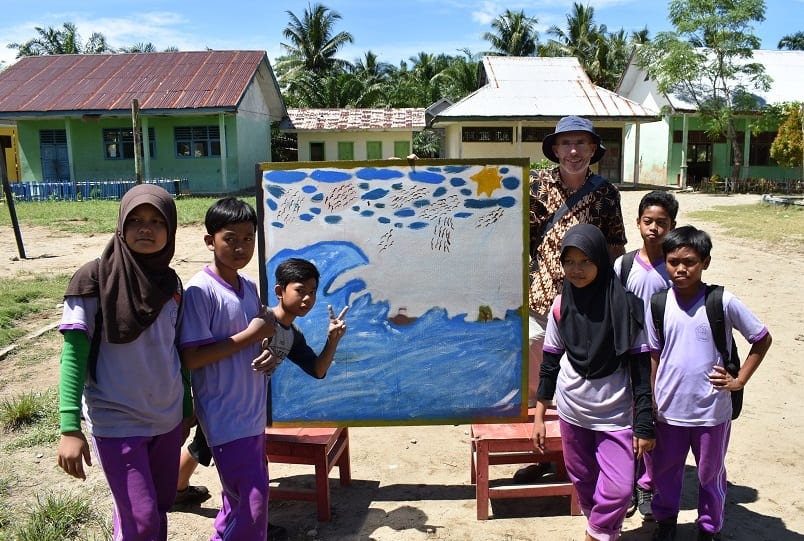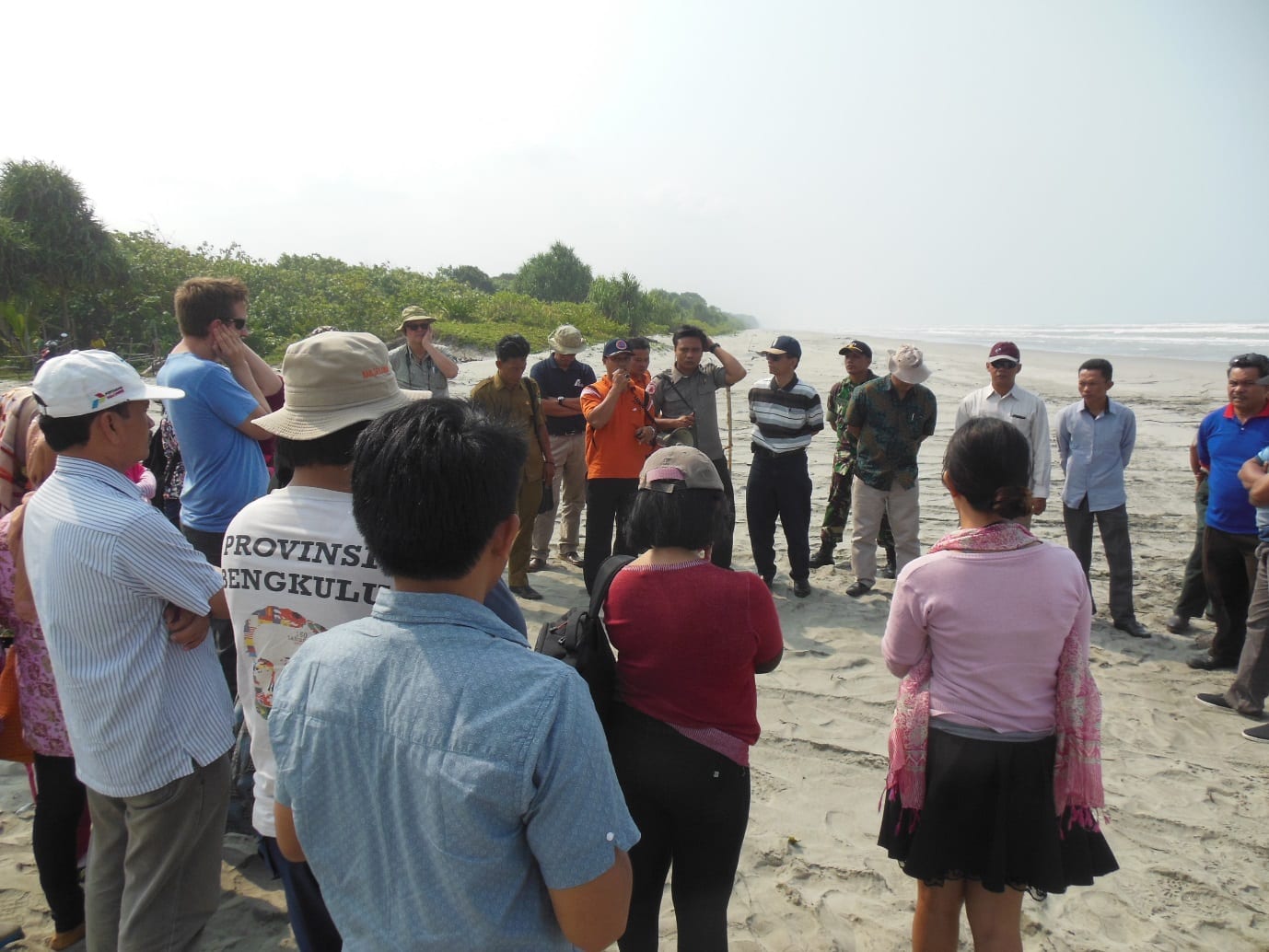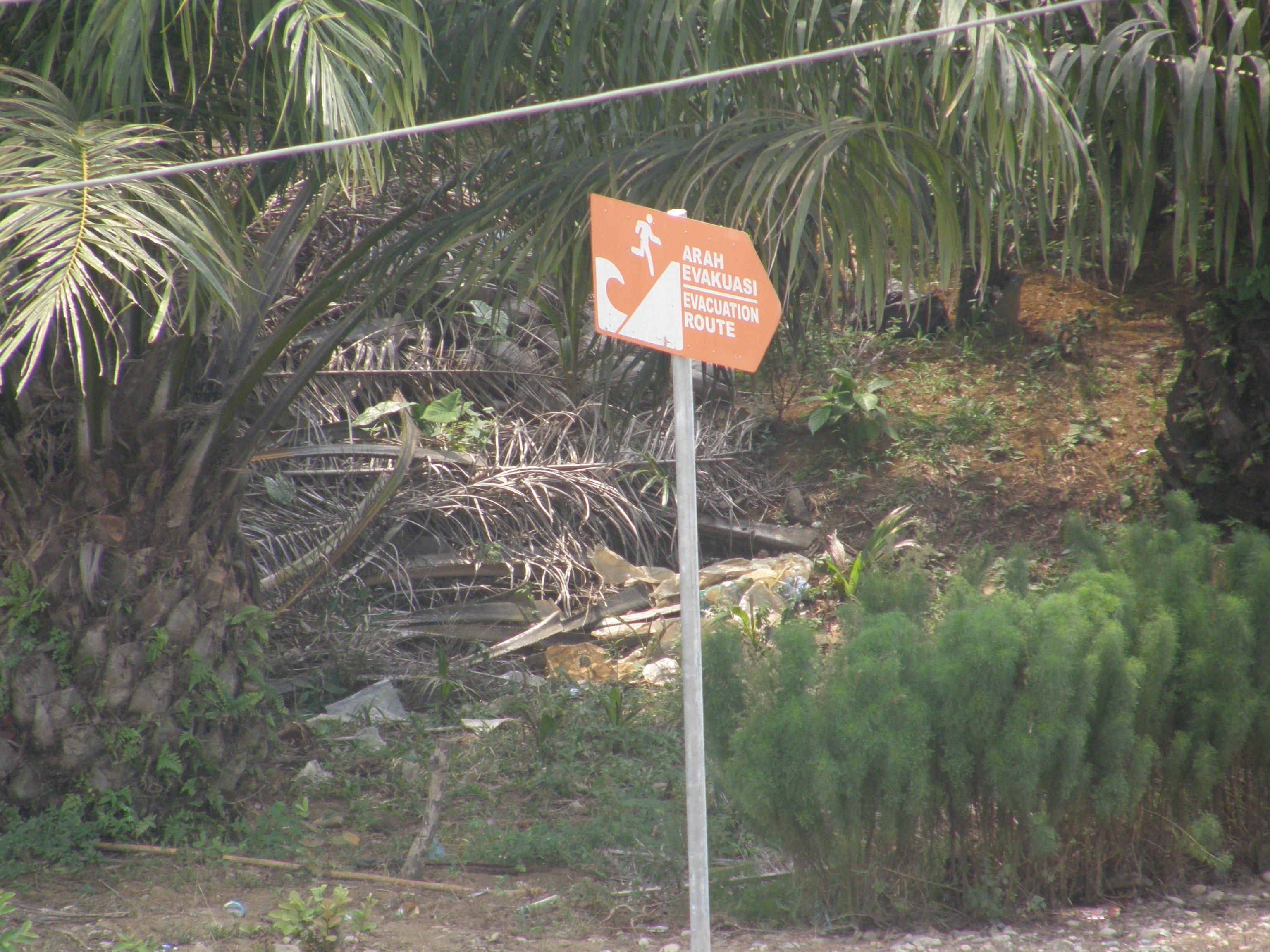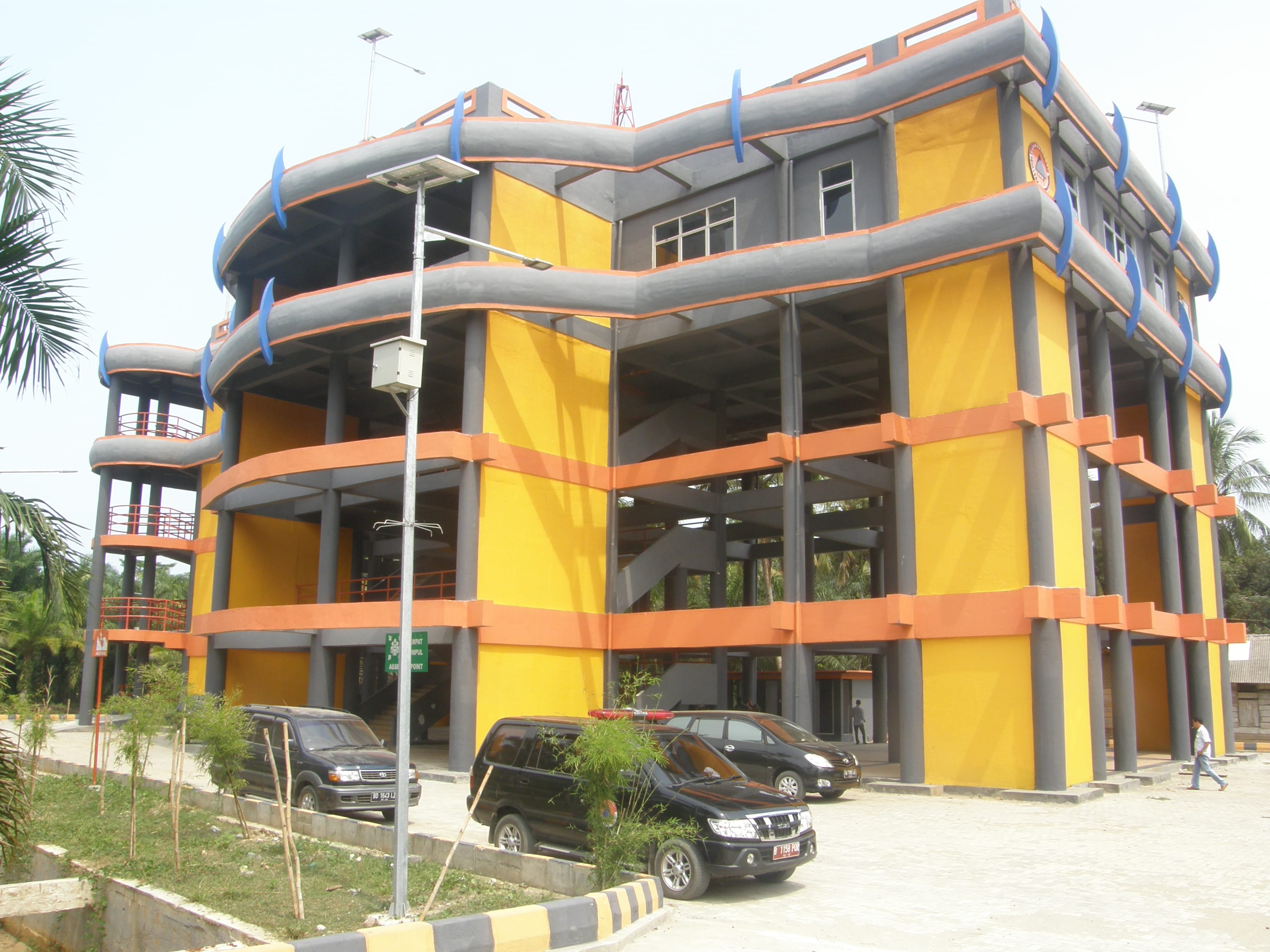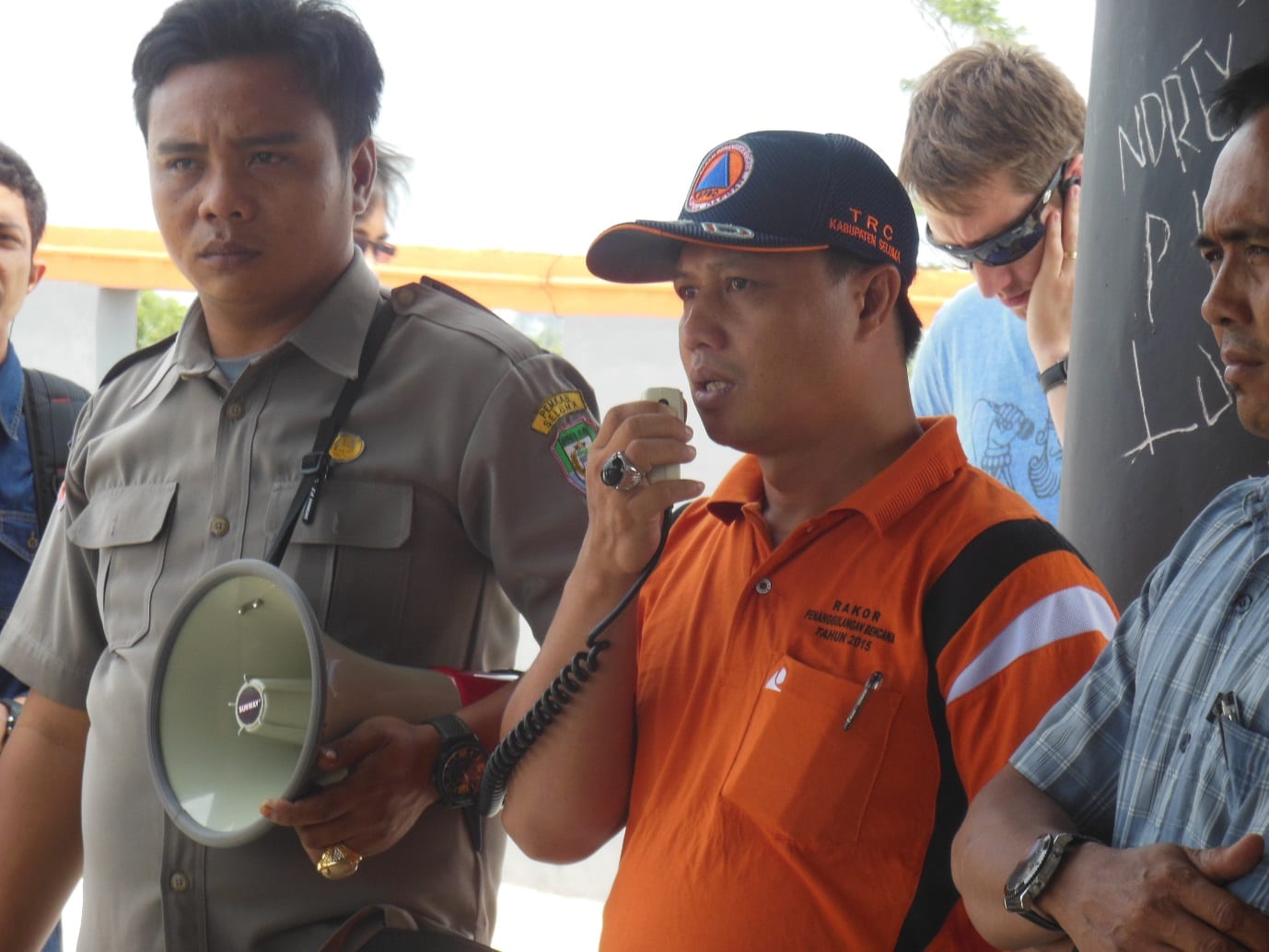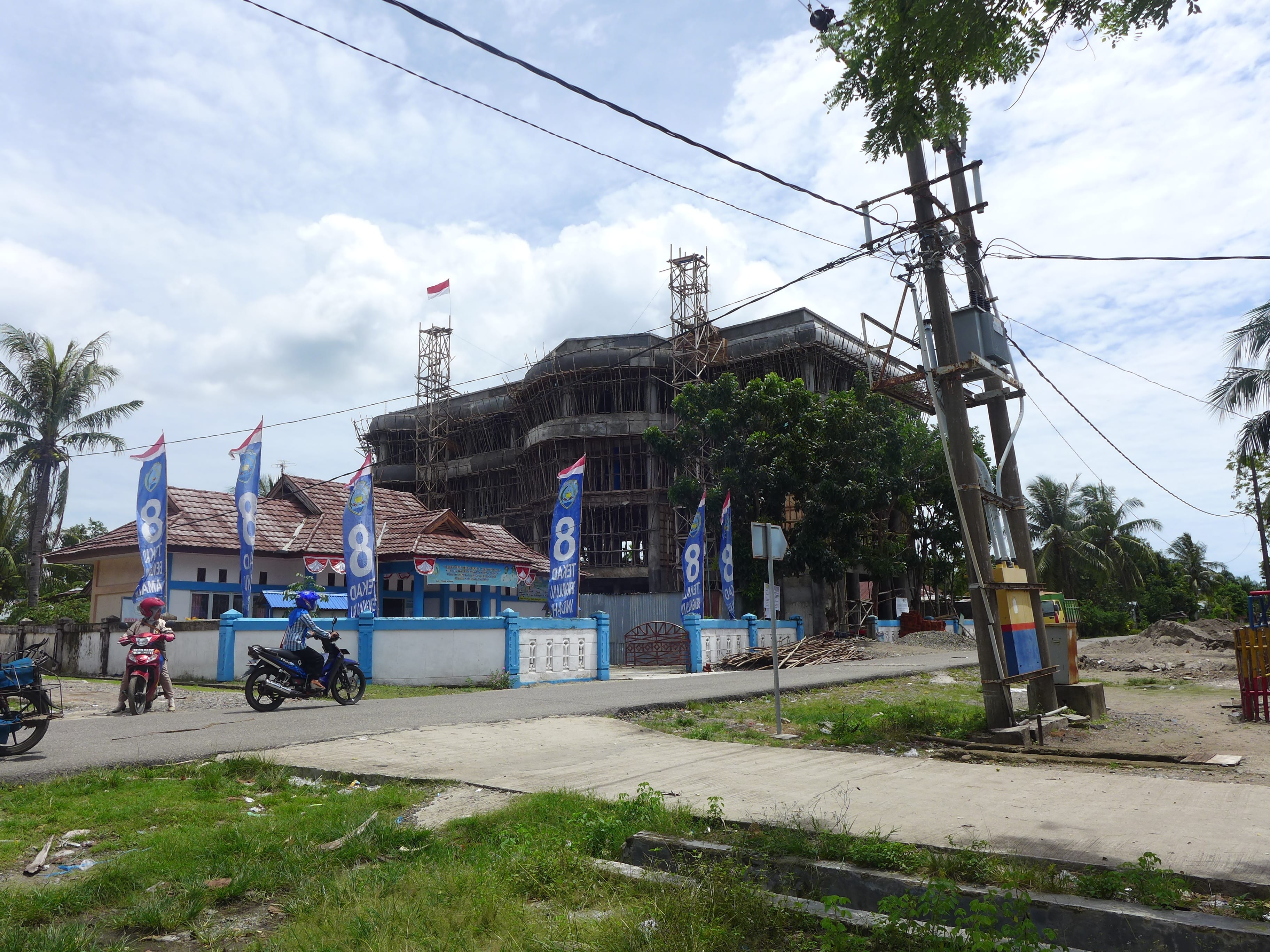Following on from our visit in March 2018, the StIRRRD team visited Rawa Indah to engage with the community and stakeholders to further develop a draft Tsunami Safe Action Plan. The team spent 5 days in the village conducting and participating in various village activities, with the help of BPBD (Emergency Management Agency), Seluma and Bengkulu University. Specifically, we
Attended, on invitation, 2 women’s prayer groups and one men’s prayer group and discussed tsunami awareness and preparedness.
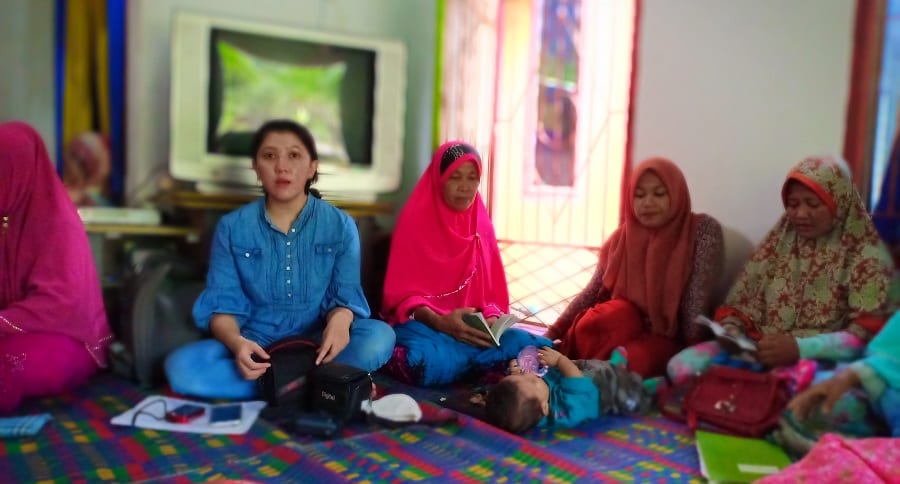
Engaged with the local community groups (POLMAS – Community Police, Tagana (Youth) BANSER and KSB) and sought their input into Actions to be taken, within 5 overlapping themes that had emerged from the initial visit, namely; 1) Shelter Management, 2) Evacuation Planning, 3) Local Access, 4) Resilient Infrastructure and 5) Prepared and Knowledgeable Community.
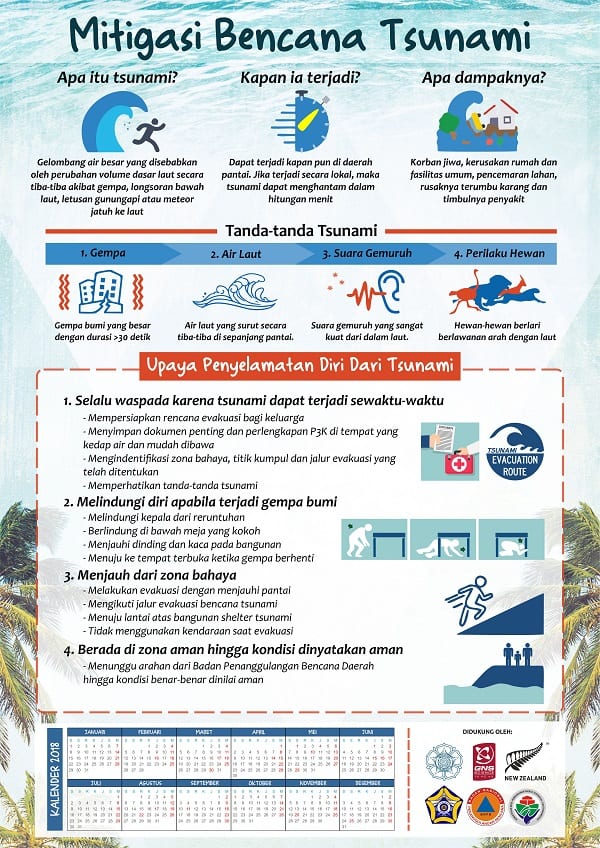 Distributed tsunami awareness and response posters/calendars developed by the team to each household and gifted maps and drone video footage flown on first visit, along with other tsunami preparedness literature and videos.
Distributed tsunami awareness and response posters/calendars developed by the team to each household and gifted maps and drone video footage flown on first visit, along with other tsunami preparedness literature and videos.
Attended Friday morning women’s aerobics at the tsunami shelter and were given an opportunity to talk about tsunami preparedness.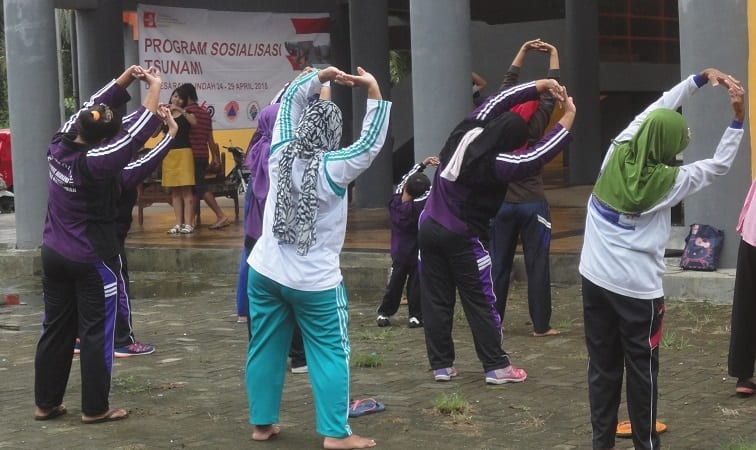
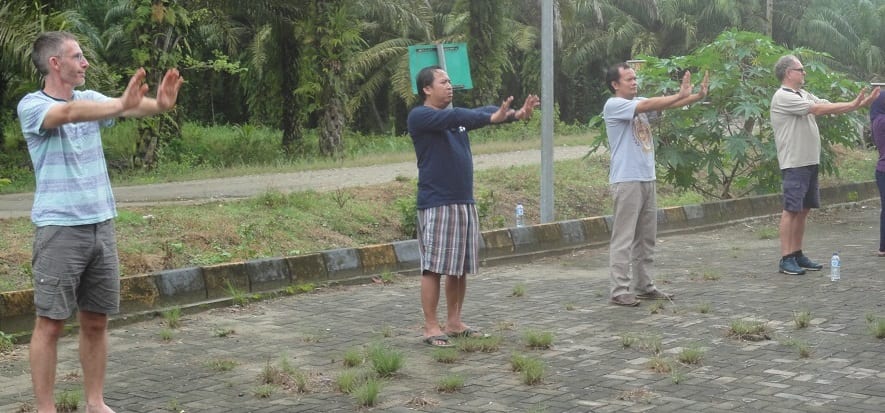
Held a meeting with District OPDs (Social, Public Works (PU), Bappeda (Planning), Education, Health, Marine and Fisheries) at the shelter to present the plan and convey the actions in the plan that were their responsibility. Implementing the plan requires a trusted partnership between the district agencies and the village.
 Participated in an evacuation simulation with children in years 4-6 from the local school and then spent some time at the shelter discussing tsunami and disaster preparedness.
Participated in an evacuation simulation with children in years 4-6 from the local school and then spent some time at the shelter discussing tsunami and disaster preparedness.
Facilitated a tsunami/disaster art competition for years 5 and 6 at the school, supplying plywood sheets, paint and some concepts. The artwork produced in a 3-hour session is spectacular, and the children stayed well after school was finished to complete their group projects. The intent is that these will be on display in the tsunami shelter.
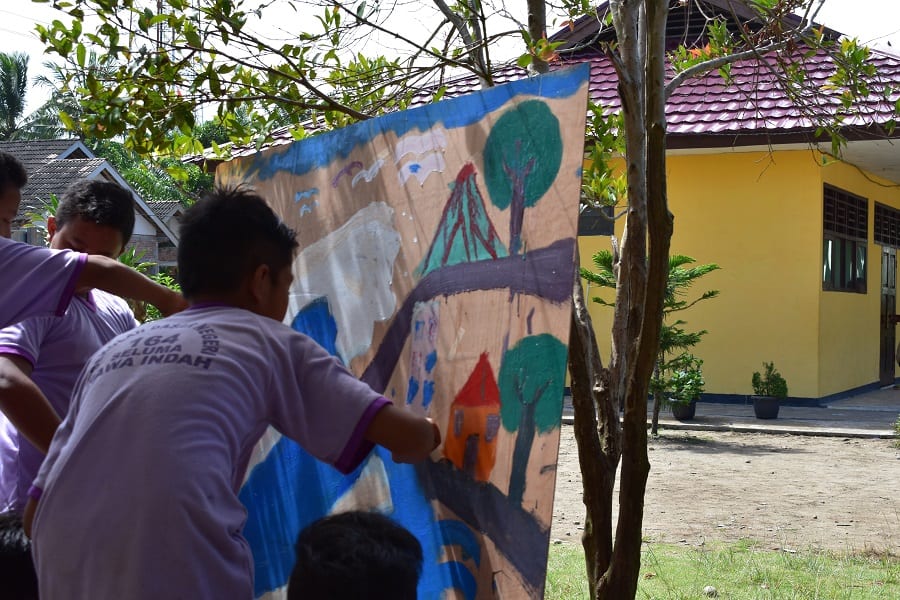
The activities culminated in a movie night at the shelter that about 500 people attended. Prior to the feature movies we showed some tsunami safe preparedness videos in Bahasa Indonesian developed by IOTIC/UNESCO, as well as the aerial video of Rawa Indah taken during the first visit. The school artwork created earlier in the day was on display. The mobile cinema was rented from the Ministry of Education, Seluma.
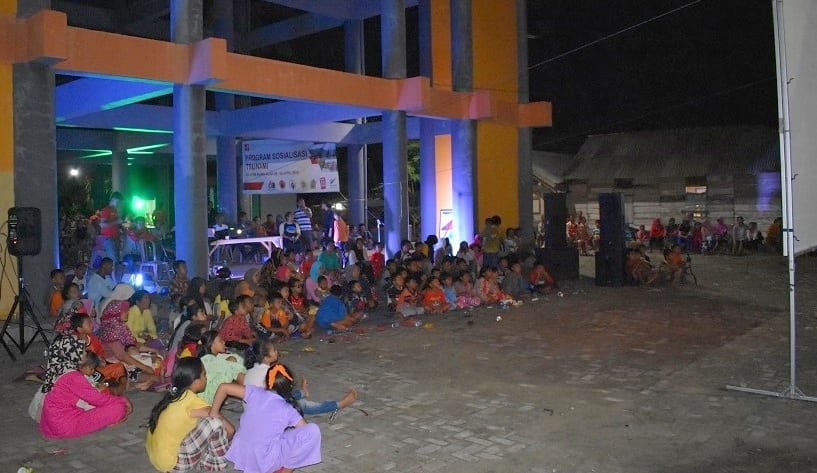
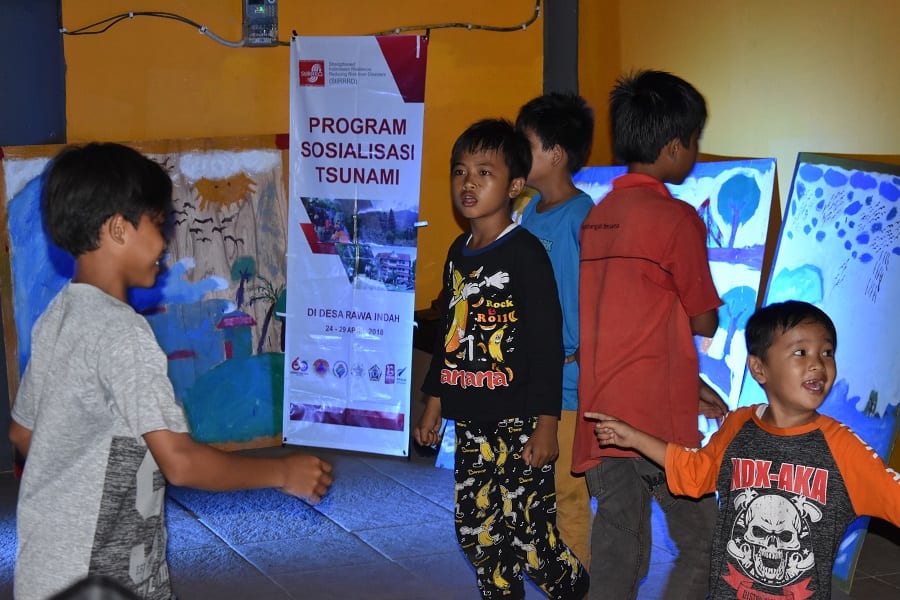
The village head, Pak Rubimanto, expressed his commitment, and that of the village to the plan and restated the intent to help facilitate similar plans in nearby villages also at risk from tsunami. Hopefully the plan and the process will provide a template for the BPBD along with PMI (Indonesian Red Cross) to extend awareness and preparedness.
We are grateful Pak Rubimanto, his family and the villagers who generously hosted us for 5 nights and engaged with enthusiasm. We have developed trusted relationships with community leaders and they are extremely keen to instigate the actions they have identified as best they can. We’ll be following up with progress in July 2018 when we hope to finalise the plan and have a village-wide simulation.

